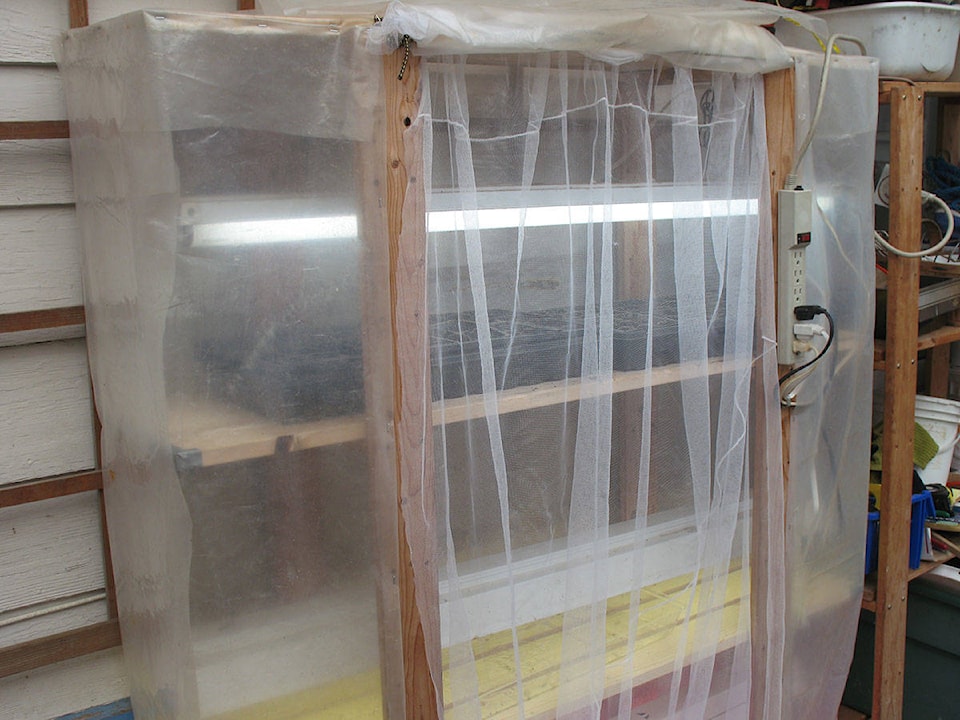By Mary Lowther
Some folks never sow seeds inside, preferring to wait until it’s warm enough to start them out in the garden or buy seedlings when they’re available. They don’t know what they’re missing. If we buy our seedlings, we are limited to what the grower has chosen this year and the timing of when the seedlings were started. Author Dick Raymond says that if we don’t push the envelope and sow earlier than recommended, we will miss out on those years when spring comes early. If we wait until seedlings are for sale we might have missed the opportunity for an earlier harvest.
Here in the mountains, hungry slugs and wood bugs proliferate as soon as things start to warm up, so I’ve taken to waiting until late spring to transplant outside. Starting crops inside skirts the predation issue because by the time it’s too warm and dry for the slugs, my seedlings are big enough to outgrow complete predation.
I’ve attached mesh to the seed table to keep out flying critters and enclosed the whole with plastic that can open when it gets too hot and shut at night against the cold.
This month I’m starting the peas, summer onions, greens like spinach and lettuce, summer crucifers like cabbage and all the herbs except basil. I’ve tried several methods to start seeds and prefer the flats of cells that sit inside an open plastic flat. I decide how many plants I’ll need and sow three seeds per cell, gradually thinning each cell to one plant, cutting the stalks with a small pair of scissors dedicated to this job. I orient the lights two inches above the seeds and as the seedlings grow I raise the lights so they are never more or less than two inches above the seedlings. These lights plug into a timer set to stay on for 16 hours a day.
When the seedlings have developed their second set of leaves I begin hardening them off to inure them against the cold, cruel outside world. I cover each tray with a piece of Remay to keep out bugs and protect tender seedlings from direct sunlight. The first few days I move the tray to an outside shelf in the mornings, bringing them in before noon, then for the next few days leave them outside all day, bringing them back inside when it’s dark and putting them back on the seed table under lights. After a week of this hardening off process, they can be transplanted outside. But if it’s not warm enough and the seedlings’ roots have grown through the bottoms of the cells, I re-pot them into larger cells so they don’t get root bound.
Please contact mary_lowther@yahoo.ca with questions and suggestions since I need all the help I can get.
